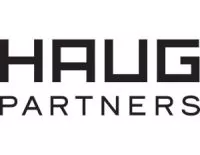What Do We know?
1. On July 16 2019, the PTAB issued a Trial Practice Guide Update ("Guidance"), where the practice of filing parallel petitions challenging the same patent was given special attention.
2. As our July Client Alert noted: In the "rare" circumstances where two petitions are filed, e.g. when "a large number of claims [are] in litigation or . . . a dispute about priority date requir[es] arguments under multiple prior art references," a petitioner "will be expected" to file a statement or separate 5-page paper justifying the need for two petitions. Guidance at 26-27. Three or more petitions are "unlikely" to be appropriate. Id. at 26. Patent owner may file a 5-page response to petitioner's justification. Id. at 28.
3. The Guidance cited Comcast Cable v. Rovi Guides, IPR2019-00224 (PTAB April 3, 2019) (Paper 10) for the form and content of petitioner's justification. The Guidance "encouraged" petitioners to use a table to rank and identify similarities and differences among petitions. Guidance at 27. The Guidance instructed patent owners to address whether the identified differences were material or could be resolved by stipulation, such as "certain claim limitations are not disputed or that certain references qualify as prior art." Id. at 28.
4. Petitioner Comcast filed its justification ranking six petitions (in tabular form) filed against one Rovi Guides patent. IPR2019-00225, Paper 12. Comcast emphasized that four petitions relied on § 102(e) references, three relied on references neither cited to nor considered by the Examiner, and the parties disputed a critical claim construction.
5. Patent Owner filed a response characterizing the six petitions as "abusive," but also stipulated that it would not swear behind § 102(e) references relied on in the first and fourth-ranked petitions. IPR2019-00225, Paper 13.
6. PTAB instituted review of petitioner's first-ranked petition and denied institution of the remaining five petitions. IPR2019-00225, Paper 14; see also Nalox-1 Pharms v. Opiant Pharms., IPR2019-00689 (PTAB Sept. 9, 2019 (Paper 11)).
Observations and Practice Tips:
1. In the Comcast case, Vice Chief Judge Fink emphasized that the instituted petition included seven obviousness grounds for each independent claim, which justified PTAB's denial of five petitions under 35 U.S.C. § 314(a) and served "the integrity of the patent system." He further noted petitioner had filed a total of 22 petitions challenging five other Rovi Guides patents.
2. We recently filed a Ranking and Explanation in IPR2019-01539 to justify institution of two parallel petitions challenging the same patent. We argued estoppel under § 315(e)(2) was a significant justification, quoting a recent District of Delaware decision applying "reasonably could have raised" estoppel. We explained it was incumbent on petitioner to present a thorough analysis of each ground raised, which required two petitions, or run the risk of being estopped in district court.
3. PTAB's requirement that petitioners justify parallel petitions challenging the same patent may conflict with SAS Institute, Inc. v. Iancu, 138 S. Ct. 1348 (2018), because the requirement permits PTAB to use its non-reviewable discretionary denial authority to effect a form of partial institution.
4. Petitioners should consider whether to file two or more petitions, PTAB Guidance notwithstanding. If the PTAB institutes only one petition and denies institution of the remainder, petitioner should not be estopped from raising the denied grounds in district court. See Shaw Industries Group v. Automated Creel Sys., 817 F.3d 1293, 1300 (Fed. Cir. 2016) ("The plain language of the statute prohibits the application of estoppel under these circumstances.").
5. Patent Owners should consider whether to concede low-percentage positions, e.g., insufficient proof to antedate §§ 102(a) or 102(e) references, or cancel claims (as Rovi Guides did) in response to parallel petitions challenging the same patent claims.
The content of this article is intended to provide a general guide to the subject matter. Specialist advice should be sought about your specific circumstances.


